The first laser grade control was developed by agricultural engineers James Fouss and Norman Fausey of USDA's Agricultural Research Service at The Ohio State University in the mid-1960's. That system controlled the precise depth and grade of subsurface drains by regulating trenching and plow-type drainage machines. Photo cells mounted on the drainage machine automatically raised and lowered the digging device, keeping the cells centered on a laser beam set to the desired elevation and grade.
2007

matic grade‐control system on the plow. Era_date_from:

George Stockton Berry (1847-1917) of Lindsay, Tulare County, California designed, built, and in 1886, operated the first self-propelled combine. He was granted a U.S. Patent (# 374,339) in1887. The Berry design embodied the following "firsts":

Established in 1907, the American Society of Agricultural Engineers (ASAE) was managed by volunteers. In 1925, local editor Raymond Olney was named secretary, thus establishing ASAE in this area. By 1969, with over 7,000 members in 100 countries, an ASAE building was constructed at this site in St. Joseph, Mi. In 2005, ASAE became ASABE to recognize the importance of biology in the profession. ASABE collects and maintains the unique body of knowledge for the agricultural/biological engineering profession.

This rocket propulsion test complex was created to flight-certify all first and second stages of the Apollo Saturn V rocket. The first test-firing occurred on April 23, 1966. Subsequent to the Apollo Program, these test stands were modified to support the testing requirements of the Space Shuttle Main Engine. Every astronaut who traveled to the moon aboard Saturn V Rockets and into space aboard the Space Shuttle, did so on rocket stages and engines that were first proven flight-worthy on these test stands.
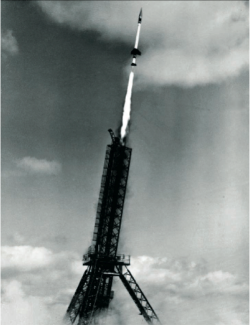
Long Range Weapon Establishment
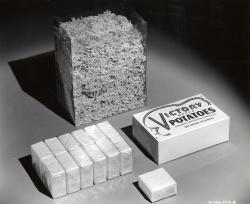
Instant mashed potatoes are commonplace on grocery shelves and have found wide use institutionally and in domestic and international food aid programs. The most successful form of instant mashed potatoes resulted from the flake process developed in the 1950s and 1960s at the Eastern Regional Research Center, a United States Department of Agriculture facility outside of Philadelphia. The process for reconstituting instant mashed potatoes devised at this facility utilized dehydration technology.

Recent archaeological evidence reveals early Virginia, which included both the Roanoke and Jamestown colonies, as the birthplace of the American chemical enterprise. Chemical processes first applied experimentally at Roanoke were re-introduced at Jamestown twenty years later.
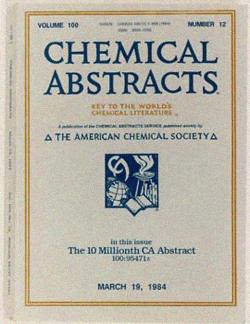
The Chemical Abstracts Service, a division of the American Chemical Society, has provided the most comprehensive repository of research in chemistry and related sciences for over 100 years. CAS innovations have fueled chemical research through development of the CAS RegistrySM and CAS databases which contain invaluable information for chemical scientists, including SciFinder® and STN®.

In the context of naval warfare, H.L. Hunley changed the world. Its builders' innovative use of materials, design and manufacturing techniques resulted in the world's first successful attack submarine.

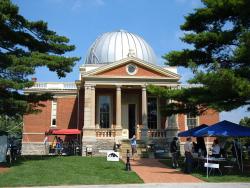
The Cincinnati Observatory, founded by Ormsby MacKnight Mitchel in 1842, is America’s oldest public/professional observatory. The observatory was situated on Mt. Adams, east of the current downtown Cincinnati; the hill was named for former President John Quincy Adams when he laid the observatory…
Read More
This elegant cast iron arch bridge designed by Scotland's famous Thomas Telford was built from 1812 to 1814. It is the earliest surviving example of a portable lattice-braced standard type that Telford developed for use at wide and deep water crossing sites unsuitable for masonry spans…
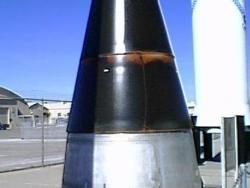
From 1956 to 1993, the GE Re-entry Systems facility was home to thousands of engineers and technicians who solved the problem of vehicles successfully reentering the Earth’s atmosphere. As described by aerospace pioneer Theodore Von Karman, “ Reentry… is perhaps the most difficult problem one…
Read More
Traversing the Great Glen of the Scottish Highlands for 60 miles the Caledonian Canal connects the North Sea by Beauly and Moray Firth on the east coast with the Irish Sea by Lochs Linnhe and Eil on the west. Thirty eight miles of the canal pass through freshwater lochs Douchfour, Ness, Oich…
Read More
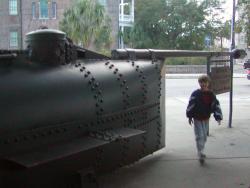
In the context of naval warfare, H.L. Hunley changed the world. Its builders' innovative use of materials, design and manufacturing techniques resulted in the world's first successful attack submarine.
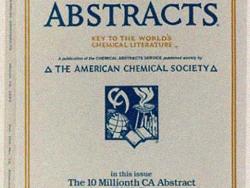
The Chemical Abstracts Service, a division of the American Chemical Society, has provided the most comprehensive repository of research in chemistry and related sciences for over 100 years. CAS innovations have fueled chemical research through development of the CAS RegistrySM and CAS databases…
Read More
Recent archaeological evidence reveals early Virginia, which included both the Roanoke and Jamestown colonies, as the birthplace of the American chemical enterprise. Chemical processes first applied experimentally at Roanoke were re-introduced at Jamestown twenty years later.
…
Read More
Instant mashed potatoes are commonplace on grocery shelves and have found wide use institutionally and in domestic and international food aid programs. The most successful form of instant mashed potatoes resulted from the flake process developed in the 1950s and 1960s at the Eastern Regional…
Read More
Long Range Weapon Establishment
Established in 1947 as a joint project between Britain and Australia, the Long Range Weapon Establishment, more familiarly known as the Woomera Rocket Range, has…
Read More
This rocket propulsion test complex was created to flight-certify all first and second stages of the Apollo Saturn V rocket. The first test-firing occurred on April 23, 1966. Subsequent to the Apollo Program, these test stands were modified to support the testing requirements of the…
Read More
Established in 1907, the American Society of Agricultural Engineers (ASAE) was managed by volunteers. In 1925, local editor Raymond Olney was named secretary, thus establishing ASAE in this area. By 1969, with over 7,000 members in 100 countries, an ASAE building was constructed at this…
Read More
George Stockton Berry (1847-1917) of Lindsay, Tulare County, California designed, built, and in 1886, operated the first self-propelled combine. He was granted a U.S. Patent (# 374,339) in1887. The Berry design embodied the following "firsts":
1. Self-propelled combine.
2. Combine…

The first laser grade control was developed by agricultural engineers James Fouss and Norman Fausey of USDA's Agricultural Research Service at The Ohio State University in the mid-1960's. That system controlled the precise depth and grade of subsurface drains by regulating trenching and…
Read More

